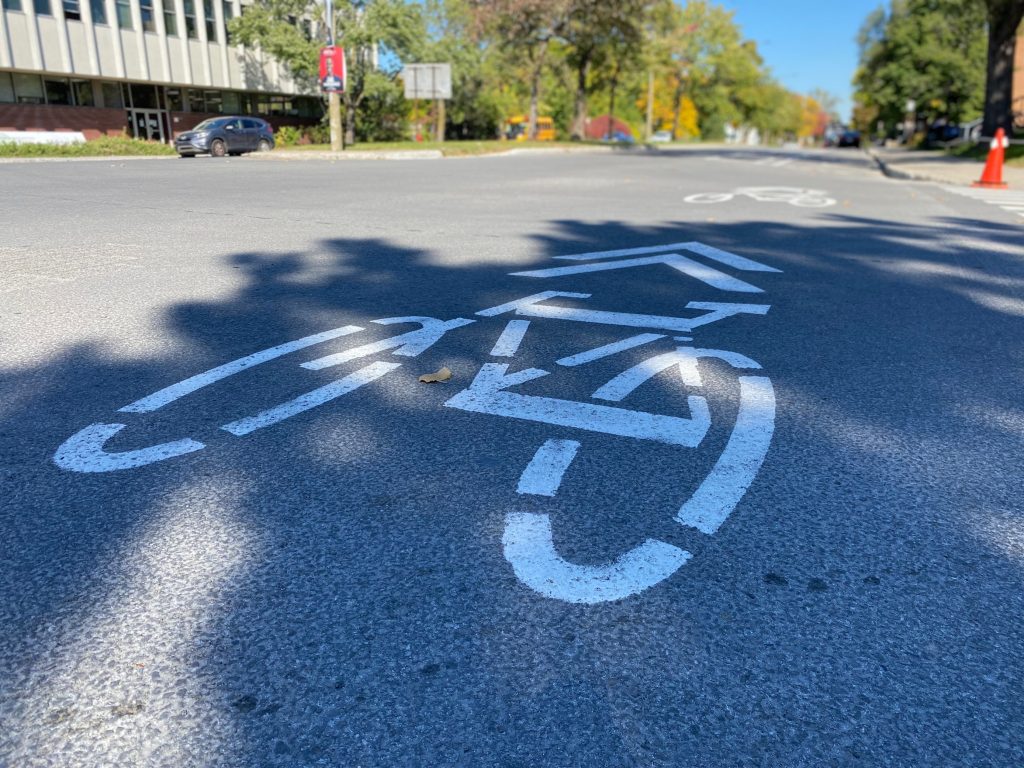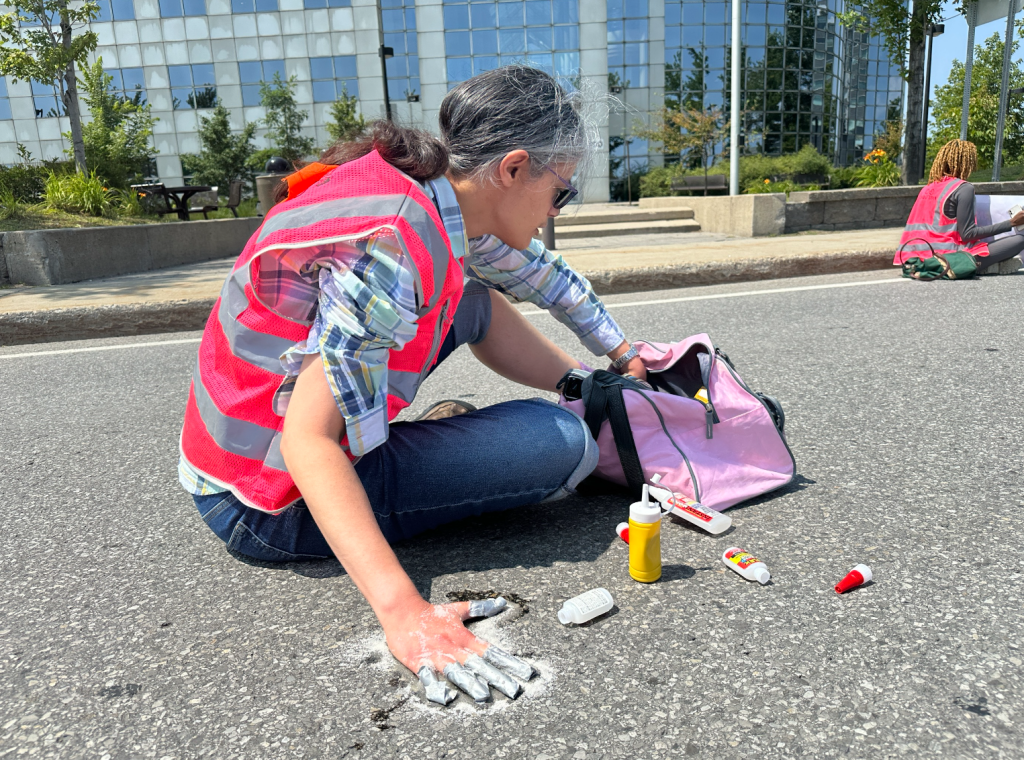Pulse Electromagnetic Field Therapy global leader from Quebec
Posted March 15, 2023 7:14 pm.
Professor Joseph J. Toy from Quebec City may have won a gold medal in Kung Fu at the 2008 Beijing Olympics but in Blainville, Quebec, north of Montreal, he’s helping everyday Canadians feel like champions.
“I see the beauty of neuromagnetic stimulation, actually, because it’s non-invasive. You don’t feel much. You feel like warm clothing, like all around you,” says Toy. “It’s not a miracle box, but it’s scientifically proven, it’s recognized, it’s approved, but it’s unknown. So that’s the difference.”
He goes on to explain that it’s an emerging technique, “but it’s been approved since 2002 by Health Canada for clinical use.” It’s just not commonly used.
While Toy claims his Chinese background has him inclined towards remaining humble, he is the global authority on pulse electromagnetic field therapy or PEMF.
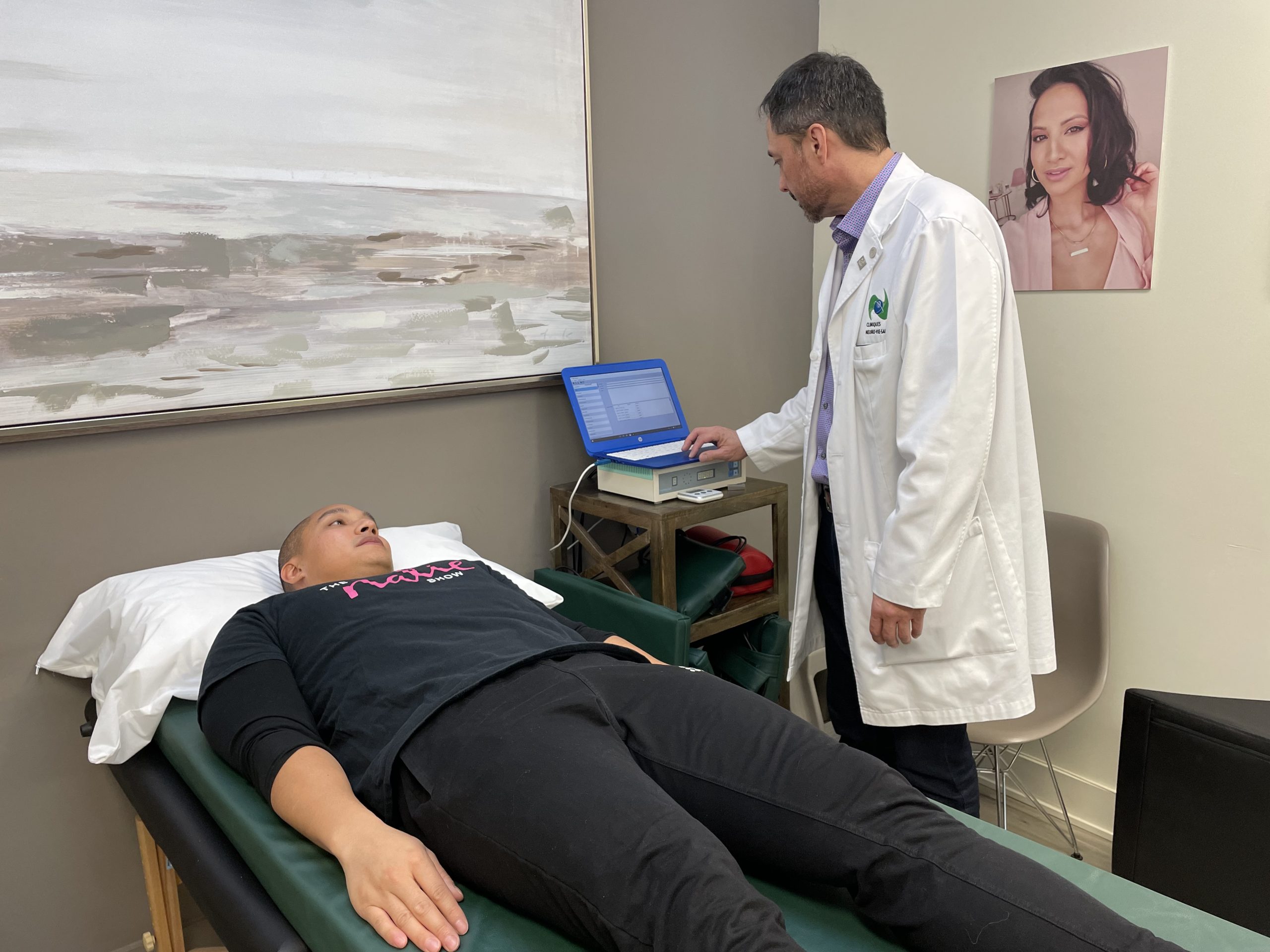
Jospeh J. Toy and Justin Agustin in Blainville, Quebec, north of Montreal. (credit: Fariha Naqvi-Mohamed/CityNews Montreal)
Late Montrealer, Nalie Agustin was a huge advocate for PEMF and professor Toy. She described it as “Electromagnetic field therapy is known to treat many of these conditions by oxygenating the blood, boosting the immune system and basically recharging yourself so that they can regenerate and function the way that they are meant to function.”
Nalie’s brother, Justin Agustin — a social media fitness coach — had no idea what PEMF was until his sister introduced him to it before her passing. He used to drive her to sessions with Professor Toy every Friday morning at 10 a.m.
“She was just such a firm believer in this technology. It really helped her improve the quality of her life. She was going through stage four metastatic cancer,” explained Agustin. “From what I saw with my own eyes, it just boosted her energy levels. Living with cancer and her inability to do a lot of stuff due to treatments and it was making her feel very weak. She was using this treatment to complement and to help her through everyday life.”
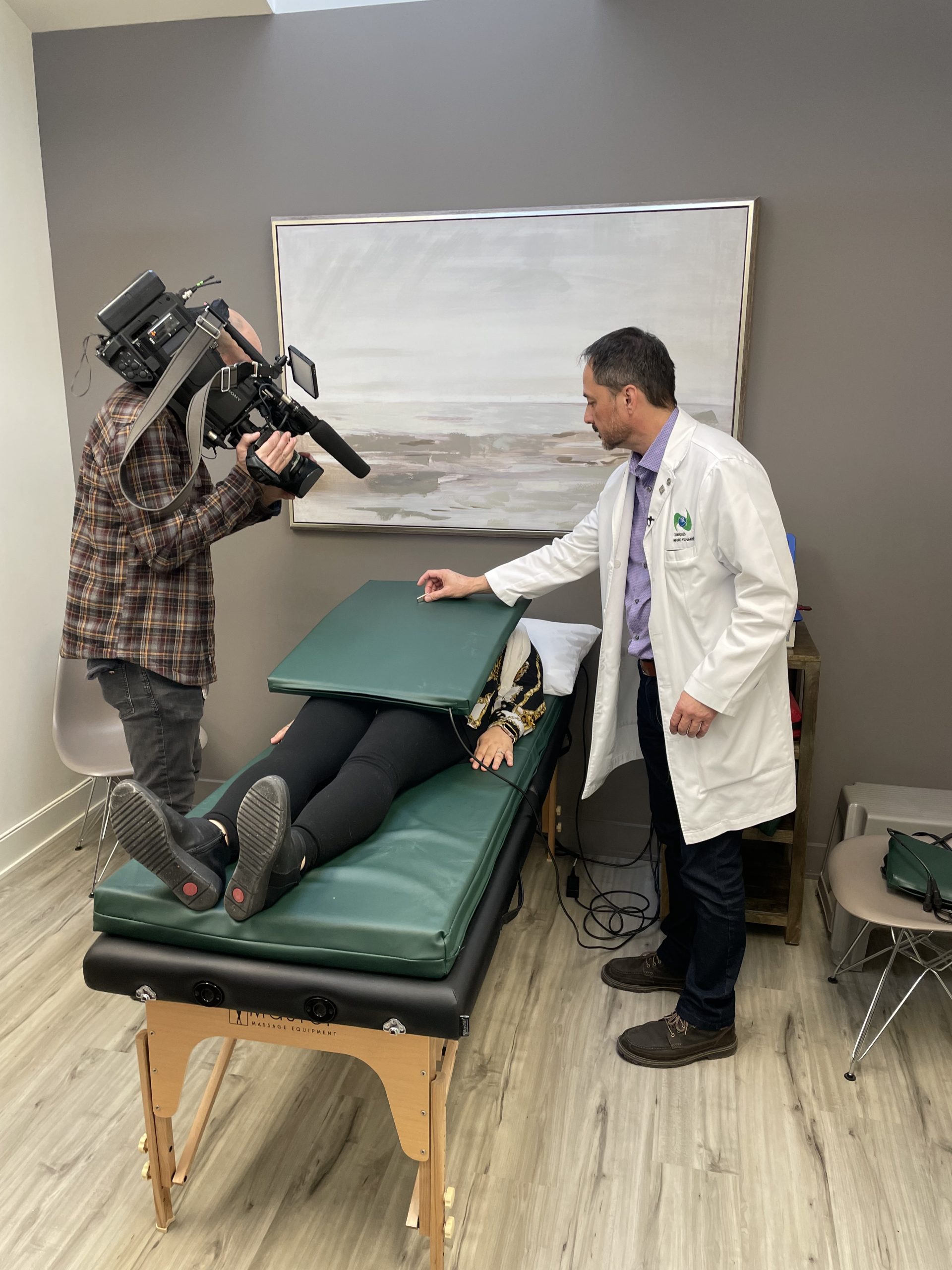
Cameraman standing over Fariha Naqvi-Mohamed in Professor Joseph J. Toy’s office. (Credit: Justin Agustin)
“When you come here and you’re treated, it’s almost like a treat here. You’re here and you feel great. And it’s a good experience. It’s almost like meditation for me,” explained Austine. “It’s funny because there’s a nice forest around this area and, you know, we would come here in the morning, she (Nalie) would be a little low energy and she would sit here. And I guess it’s also the vibe too that that really helps, but especially the technology that just made her want to get up and go for those post-PMF walks with me, which was which is something that I’ll cherish forever.”
Agustin continues, “she was always a go-getter. She always wanted to educate herself. She didn’t want to just, you know, take her diagnosis and roll with it. She wanted to find solutions and to, you know, making her life better, not to be defined by her diagnosis.
“So, she did everything in her power to breathe another day, to live another day.
He added that Nalie looked for multiple treatments before being finding PEMF and ultimately becoming an ambassador for it.
“When she found PEMF, it was something that she stuck to because it gave her a lot of hope. But also, as I said, give her that boost of energy, give her that hope. And it was also a way of meditating,” said Agustin.
“You know, she was here for an hour and a half and she would lay down here and look up at the sky because it’s a nice window up there and just meditate. And it made her stronger while giving her a stronger mindset as well.”
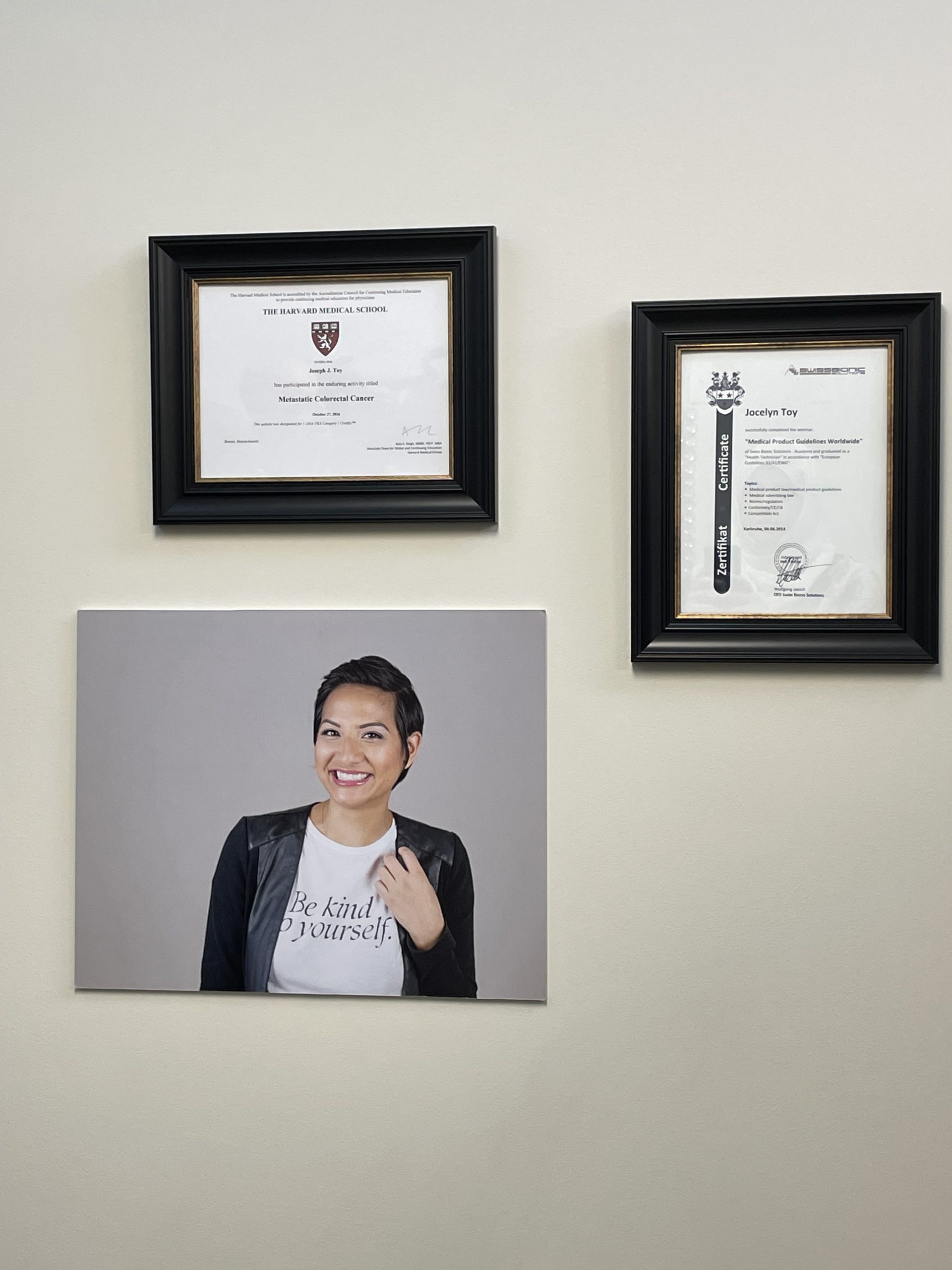
Nalie Agustin’s picture displayed at Professor Toy’s office. (Credit: Fariha Naqvi-Mohamed/CityNews Montreal)
Professor Toy explains PEMF as “the battery of your car you’re trying to start. The car is there is gasoline. There is nice pressure on the tire and everything is going well. There is oil in the engine, but the engine doesn’t start because the battery is too low.
“So what we do is boost the battery of the car. So then the car is turning back again. So the cells there are like mitochondria into the cells and those mitochondria are like the door, the battery of the car. So far for us, it’s the same principle to be able to recharge the battery of the cell so the cells function properly.”
Since 2016 PEMF has been used by the Canadian Psychiatric Association, neuromagnetic stimulation as a first line of recommendation.
Toy explains, “So now, especially on depression, when there is at least one antidepressant that doesn’t work, then neuromagnetic stimulation becomes a first-line recommendation. But for anxiety mood disorders, you can actually have good support. It may help by conditions like tremendously in combination with psychotherapy, for example, or psychiatry or follow-ups.”
Professor Toy says he works with retired vets, athletes, people recovering from surgery, and everyday people. He came across PEMF while trying to find a solution for PTSD. He also travels extensively to share his expertise with practitioners around the world.
